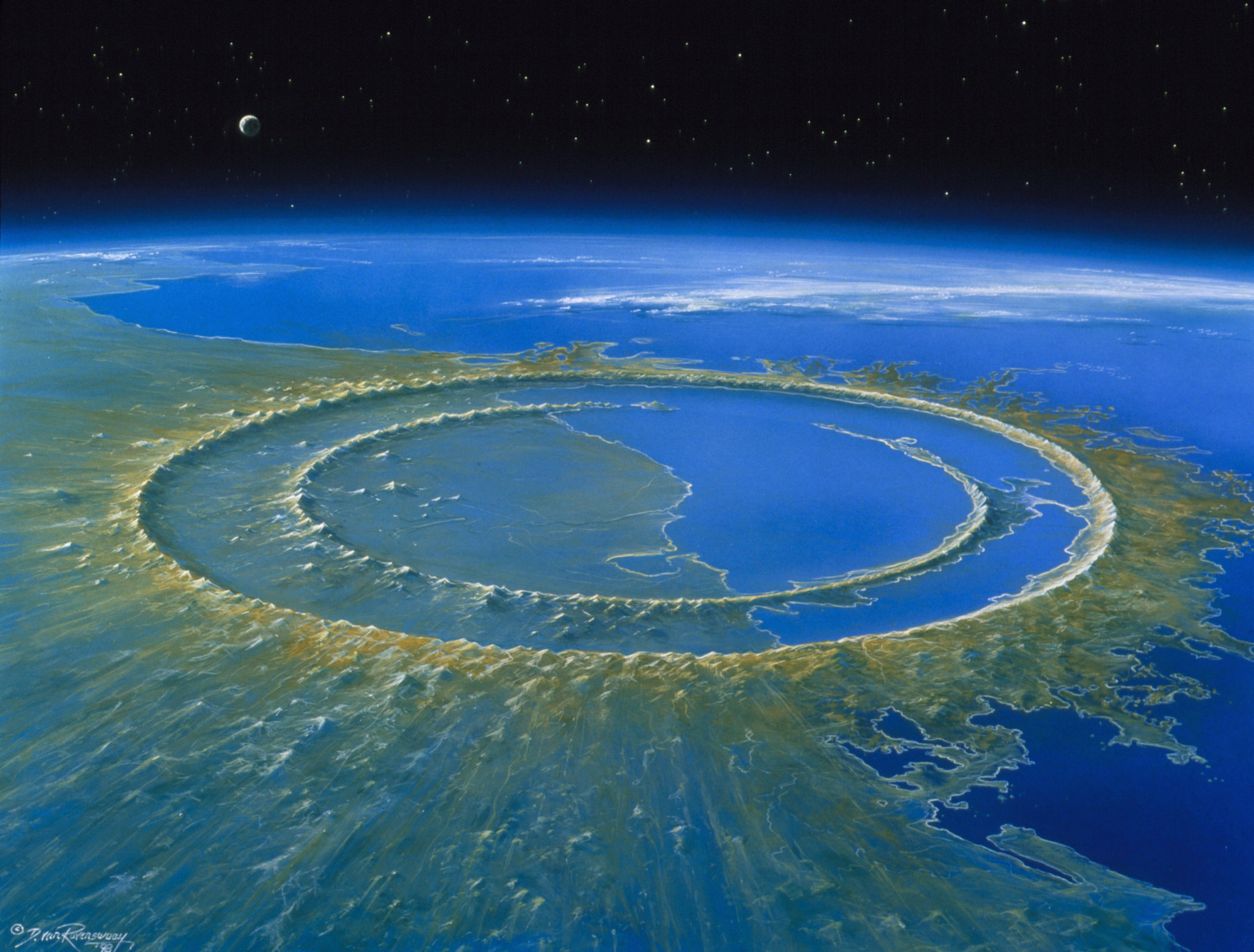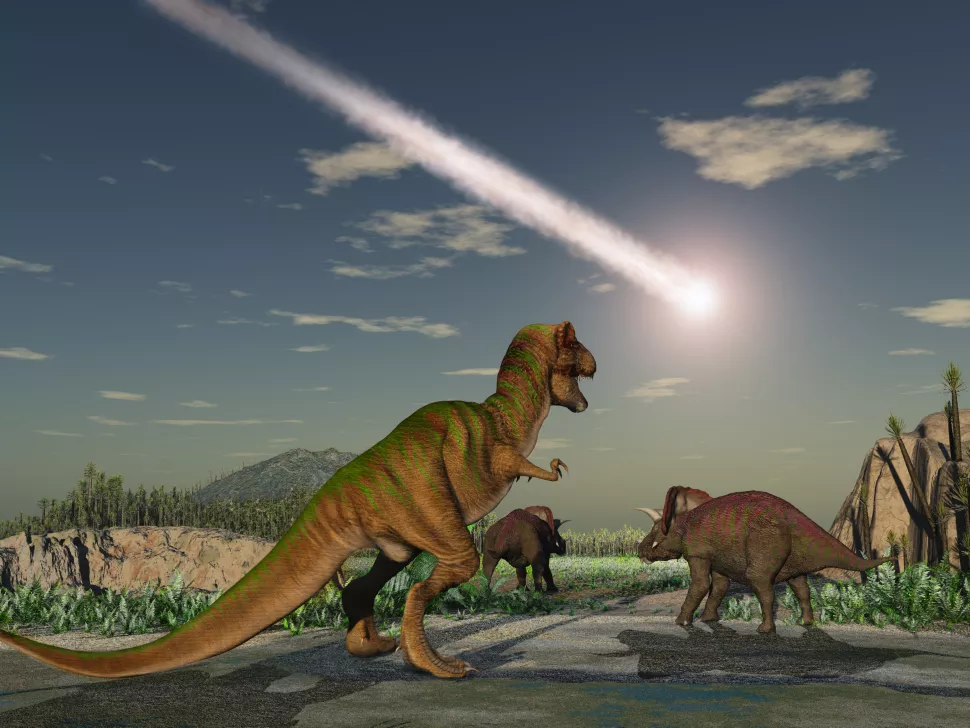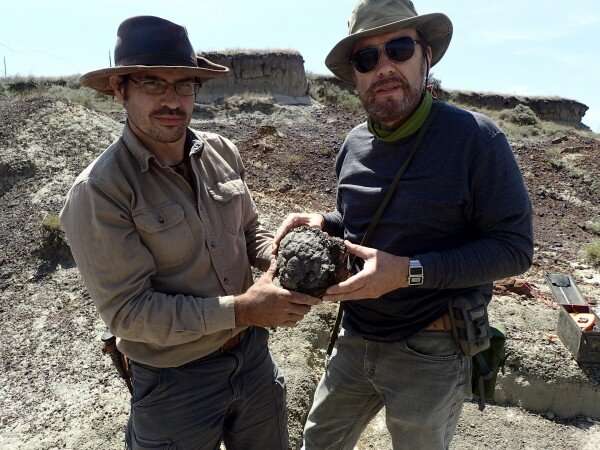66 million years ago, the asteroid Chicxulub caused the extinction of the dinosaurs and 75% of life on earth. A groundbreaking study has recently pinpointed the time when the Chicxulub meteorite hit the earth. Whether ironically or logically, the 165-million-year reign of the dinosaurs ended in spring, the season of new beginnings.
The study was carried out by scientists at Florida Atlantic University (FAU) and an international team of scientists. The results of the study, published in the journal Scientific Reports, have greatly expanded our ability to track the first stages of damage to life on Earth.

Chicxulub crater.
This is an important scientific advance that helps us understand the great impact that ended the dinosaur dynasty. The protagonists of this outstanding study are two scientists from the FAU, Robert DePalma and Anton Oleinik.
“Time of year plays an important role in many biological functions such as reproduction, feeding strategies, host-parasite interactions, seasonal hibernation, and reproductive patterns. So it’s no surprise that the time of year for a global hazard can play a big part in how it impacts life. Thus, the seasonal timing of the Chicxulub impact is an important question in the late Cretaceous extinction story. So far, the answer to that question is still unclear“, ScienceDaily quotes paleontologist DePalma verbatim.
For decades, it was known that the asteroid that caused the extinction event Chicxulub hit the Yucatan peninsula 66 million years ago. This collision caused the third largest mass extinction in Earth’s history, dramatically altering global biomes in ways that are directly related to the current global ecological crisis. . However, the finer details of what happened after the collision, and how those events led to the third worst mass extinction in Earth’s history, remain vague.

An illustration of the moment before doom.
The new study is a long-term effort begun in 2014 that uses a combination of traditional and cutting-edge techniques to piece together the clues that will allow the season of the Chicxulub impact to be determined.
To understand the inner workings of the extinction event, DePalma examined a research site called Tanis located in southwestern North Dakota, one of the Cretaceous-Paeontological boundary sites (also known as the boundary). K-Pg) highest detail in the world. The research provided important new data and built new academic bridges.
“This unique place in North Dakota has provided loads of new and interesting information. After hard work analyzing field data collected at this site, scientists have a new, incredibly detailed look at not only what happened at the Cretaceous boundary- Paleontology but also about when this event took place exactly“.
“It is not surprising that there are so many independent lines of evidence, which strongly suggest the time of year when the asteroid hit the Earth 66 million years ago. One of the great things about science is that it allows us to look at seemingly well-known facts and facts from different angles and with varying degrees of precision, thereby enhancing our understanding of science. our knowledge and understanding of the natural world. It also proves that geology and paleontology are still the sciences of discovery, even in the 21st century“, said Oleinik.

Two scientists Robert DePalma (left) and Anton Oleinik (right) at the research site in North Dakota (Image: Florida Atlantic University)
The Cretaceous-Paleolithic boundary is the geological term for the sudden mass extinction event 66 million years ago, which wiped out 75% of the animals and plants on earth living in the area. Mesozoic era, including all the dinosaurs. The Cretaceous-Paleolithic boundary is also known as the K-Pg boundary due to the translation of the German word “Kreide” (meaning chalk).
Before that, a similar study led by paleontologist DePalma in 2009 noted that the high water volume caused by the impact was responsible for the rapid deposition of the sediment. This has resulted in the only known effect of mass death of the vertebrate assemblage at the K-Pg boundary.
The unique structure and pattern of growth lines in fossil fish bones at the study site (which looks like a barcode) showed that all the fish surveyed died during the spring-summer growing period. This independent confirmation is thanks to high-tech isotope analysis of the growth lines. Accordingly, the annual oscillation ceases during spring-summer growth.
The team’s conclusions are supported by additional evidence.
This evidence was made possible by a relatively new seasonal dating method, the advanced X-ray fluorescence SRS-XRF with juvenile fish fossils.
The team estimated how long the fish were buried after hatching by comparing the sizes of the youngest fish with modern growth rates. Comparing these sizes with modern breeding seasons, the scientists inferred that the Tanis deposit’s seasonal interval was spring to summer, the same time period as the fishbones indicated above. .

Dead fish at the Tanis research site (Image: University of Kansas)
“The beauty of any great discovery like this one is that it’s an opportunity to give back to the scientific community and the world. It not only answers the important questions but also sparks new ideas to reach and achieve“, DePalma said.
Research at the above site will be completed in the future, and additional upcoming projects will hopefully uncover more details about this exciting and important time period. According to ScienceDaily, in addition to the main research team, many researchers from other institutions – who were not involved in the main research – have examined the site, and there is no indication that this collaborative project will soon. end.
Refer to ScienceDaily
.
